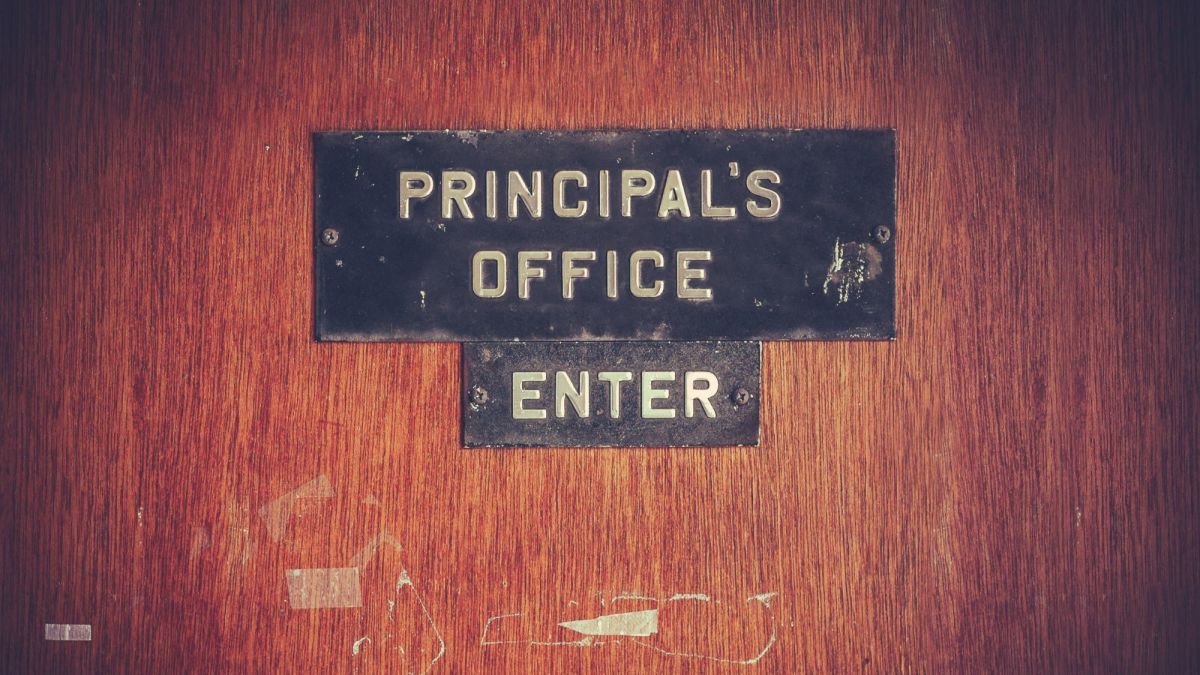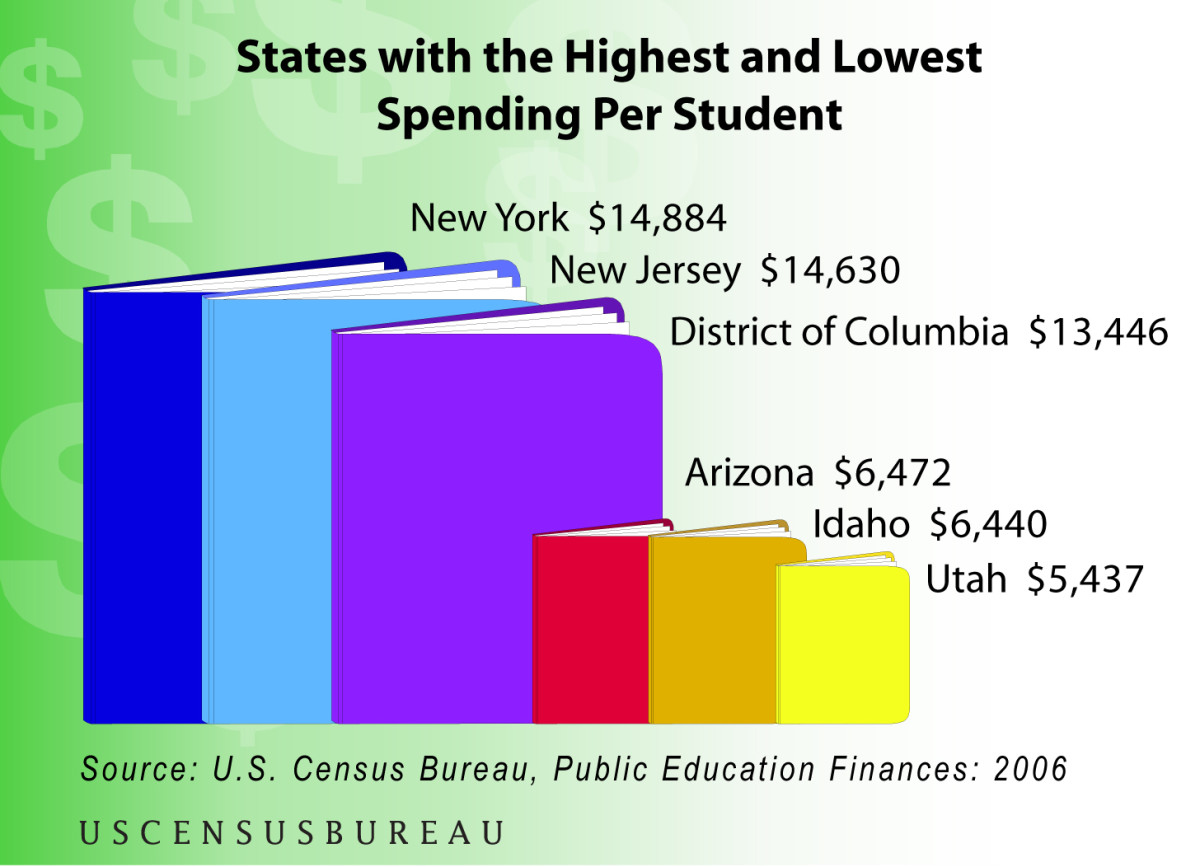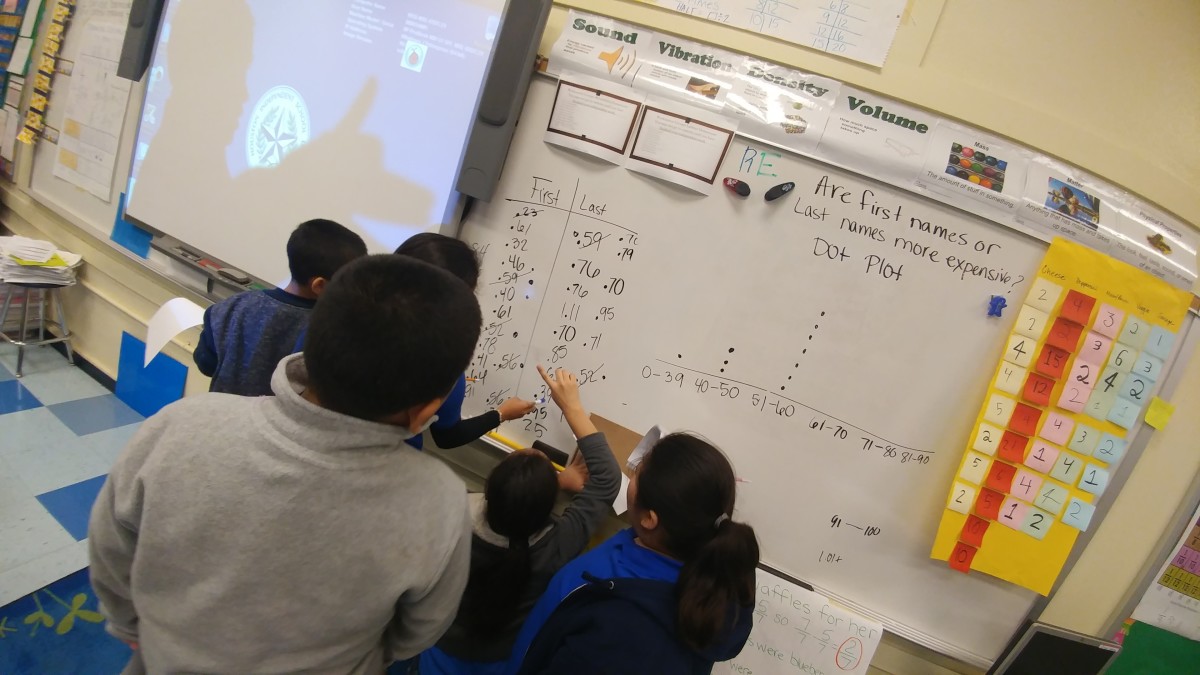Management of the Organization, Operations, and Resources
Summary
There are so many responsibilities pertaining to a superintendent job. In short, a superintendent must monitor and evaluate the district management and operational systems, must make sure that everyone efficiently uses technology, human, and fiscal resources in the schools, must provide safety to the welfare of the students, faculties, and staff, must lead in a distributed manner, and must provide high quality instruction and make sure that students effectively learn. A superintendent must be a good leader. I interviewed two principals and two assistant principals, and they shared their leadership responsibilities with me, as follow.
Interviews
I was subbing at Trade Wind Middle School last Friday, April 4, 2015. I attempted to interview the school principal, but she did not have enough time to talk to me due to her job responsibilities. She must fulfill her responsibilities during work hours. To save time, she simply told me that in order for someone to be a good superintendent, principal, or assistant principal, he or she must be a very good leader to manage the entire organization.
Later, I approached two anonymous assistant principals by the school’s main office. They did not want to disclose their names for security purposes. They chose to stay anonymous. I asked them several questions about student teacher evaluation, safety method, collaboration, technology, and marketing. They told me that student evaluation of teacher is good and helpful but is not effective in evaluating teachers because students can lie on teachers. If they like you, they would say good things about you. If they do not like you, they may badmouth you. To evaluate teachers, they use mars anal as an observational tool and supervise teachers in the classrooms. Sometimes they use student teacher evaluation as an additional tool to strengthen or analyze their mars anal evaluation results. When asking them question about what type of strategies that they use to make sure that their students are safe, they said that they clear all the areas of the schools, close the gates, and set up drills and alarms. They also set up policies within the school. They have policies about technology, such as cell phone usage. They said that technology is good, but it has certain type of negativities. Sometimes students use cell phones to text in class. They do not pay attention. One of the policies that they have is prohibition of cell phone usages. Students are not permitted to use their cell phones in the school. However, that did not stop many students from violating the policy while most students comply or follow it. When they caught students using cell phones, they take the phones and send them directly to a special room in the main office of the school, and parents are the only ones who are permitted to take the phones. To improve technological service at the school, one of the assistant principals said that she would make sure that every student has a laptop or Ipad. She said that, now-a-days, tests are given through technology. I asked her, who would provide the Ipad? Is it the district or the student’s parent? What would you do if students keep messing up their devices? Would you provide another one to them if the problem repeats so often? The assistant principal responded that the district should be the one responsible for providing the Ipad or the laptop. It would be in the district’s best interest to do so, and the district should have contract with an agency to prepare the devices when they break. Accident happens. Things break. Things stop working for no reason. Sometimes it is not the student’s fault. I asked the assistant principals questions about how they develop a good relationship with their principal and their superintendent. They responded that they collaborate with their principal to do the job. They share duties. They meet together as leaders. They go to the district meeting together. They have a RAPPORT. They discuss problems and solutions. They have communication tools around the school. To communicate, they exchange phone numbers. They use walky-talky around the schools. They said that they do not have a strong relationship with their superintendent, but their principal does have a good relationship with the superintendent of the district. They barely see and talk to their superintendent. However, their relationship with their principal is tremendously strong and active.
The assistant principals told me that they have marketing videos in the schools’ website and other websites. They have principal’s news letter. They also have some types of advertisement system outside the school.
Around 8:20 PM, I called Principal Neiland, Oslet of the school of Bethesda des Gonaives, Haiti. Bethesda is a middle school in the district of Artibonites. I asked Oslet several questions regarding student evaluation of teacher, safety method, collaboration, technology, and marketing. I spoke with him in Creole to meet language barrier. He told me that due to the financial situation of the school, he is incapable of using observational tools to evaluate the teachers, but he uses student evaluation of teacher as a method. He supervises the classes sometimes. They do not have fire alarms, drills, or security guards to provide safety to the school because of a lack of money, but they close the gates and the classes’ doors and make sure that no one is on the school ground, but the students and staff members. He told me that he corporates with his staff members to do the job. He cannot do all by himself. The school does not have that much money and does not receive any funding from the government because it is private, so corporation is essential to provide a good education to the students. Staff members communicate through cell phones. They do not have any other tools to communicate. They set up a time for lunch. Teachers are responsible for taking students to lunch when it is lunch time. The school only has two computers with internet. Sometimes the internet got cut off because administrators are unable to pay the monthly fees. Staff members use the media as a source of marketing for the school. Oslet said that one of his brothers is a journalist and an animator, so he does not have to pay for the school marketing. Staff members put pan cards around the streets to advertise for the school.
Monitor and Evaluate District Management and Operational Systems
As a superintendent, to monitor and evaluate the district management and operational, organizational, and legal system, I must provide feedbacks to the leaders or the operational management system managers. I must be proactive, that is, I must try to detect future possible problems before they occur. I must come up with necessary proactive solutions for the future possible problems. I must monitor the efficiency of the district management and operational system. I must provide guidelines or set up plans for future operational and managerial projects. “Relevant analysis from project and policy evaluation can highlight the outcomes of previous interventions, and the strengths and weaknesses of their implementation, “(Web.mit, 2015). I must be very influential. Leaders must improve the district management and operational system design. My teammates and I can use project design tools to do so. “Use of project design tools such as the logframe (logical framework) results in systematic selection of indicators for monitoring project performance. The process of selecting indicators for monitoring is a test of the soundness of project objectives and can lead to improvements in project design,” (Web.mit, 2015). Additionally, the district leaders must look for the laps that they must correct. Incorporation of views of stakeholders is sometime essential to apply for a district to succeed in terms of project system design. “Awareness is growing that participation by project beneficiaries in design and implementation brings greater ‘ownership’ of project objectives and encourages the sustainability of project benefits. Ownership brings accountability,” (Web.mit, 2015).
Webmit (2015) goes on to indicate that to monitor and evaluate, “Objectives should be set and indicators selected in consultation with stakeholders, so that objectives and targets are jointly ‘owned’. The emergence of recorded benefits early on helps reinforce ownership, and early warning of emerging problems allows action to be taken before costs rise.” This statement can make us realize how having a plan, as a superintendent, can be helpful to monitor and evaluate the district management and operational system and can save the district from wasting costs. As a candidate, I must know that efficient use of human, fiscal, and technology resources would be tremendously helpful. “Candidates must understand and can efficiently use human, fiscal, and technological resources to manage school operations,” (Harris, Ballenger, & Cummings, 2015). Additionally, students and staff members must be safe in the schools. I should use the school capacity as a tool to lead. Teachers must be organized and must have enough time to provide instruction to the students so that the students can learn accordingly.
To manage public relation and marketing functions, I must respond to possible growth and evolution of the public and the market. I must develop a good relationship with the public and marketing agents. “There's always been some degree of tension and competition between public relations and marketing people, especially when it came to questions of which discipline ought to be dominant or which contributed more to their organization's well-being. They also competed for sometimes scarce internal resources and for public attention,” (Turney, 2001). So as a superintendent, I must be able to respond to the tension and competition that can occur within the district. I must also be able to accordingly respond to the public. Observation can be a good way to respond to the public attention, the tension of marketers, and the competition within the district. Before conducting observation, I may possibly analyze many criteria within the district so that I do not cause any harm. To manage public relation and marketing functions, “Some companies and organizations used the degree to which they used them, and the specific ways in which they used them varied from organization to organization based on the organization's purpose, size, and unique organizational history. Some general observations can be made,” (Turney, 2001).
Efficient Use of Human, Fiscal, and Technological Resources
To efficiently use human, fiscal, and technological resources, I must strategically and administratively manage the resources and their departments. “Human resources departments provide two kinds of services: administrative and strategic. Russ Elliot, senior vice president, human resources director at Bridge Bank, says initially, it’s critical to develop effectiveness and efficiencies on technical aspects of human resources,”(Burroughs, 2012). I must listen to other leaders within the district. I must analyze and take in consideration the recommendations of the human, fiscal, and technological leaders of the district. I must use their recommendations when they are reasonably appropriate. “’The key initially is listening to understand that each area of an organization is slightly different, requiring a unique set of resources and support,’ Elliot says,” (Burroughs, 2012).
“It’s important to understand the culture and subcultures, the direction the leaders want to go with the resources and their vision,” (Burroughs, 2012). I must pay close attention to the needs of the district. We, the leaders, must use human, fiscal, and technological resources when we need them. We should not use them for trivial reasons. We must use them properly and accordingly. We can devalue our resources if we fail to use them properly. We must protect our resources. “Effective HR must look ahead. With knowledge of the whole business, it can use that to contribute to the growth and strategic direction of the entire company,” (Burroughs, 2012).
Technology can help teachers explore, but they must use it correctly. “To help teachers integrate technology more effectively into their teaching, professional development around educational technology should be a higher priority for schools and districts, and it needs to be ongoing and collaborative and should focus on what students need to learn, rather than on how to use a specific device,” according to Utkarsh (2014) in the article titled “Effective Use of Technology in Education”- A New Discipline to Be Taught. We must use technology based on the context, but not isolation, that we want to use it. We must make sure that our students do not navigate on improper websites. For example, we must have active programs in the computers that would prevent students from watching pornography. “It’s not just about providing devices in a classroom or in the hands of students. Are you providing connectivity? Do you have local content available to them? And are the teachers trained? All of these are important to help bridge the digital divide,” ( Utkarsh, 2014).
To properly use fiscal resources, I must develop a clear financial and fiscal strategy. We, the district leaders, must develop good relationships with other leaders relating to taxation, public revenues, and public debt. We must “gain the respect and confidence of funding agencies, partners and beneficiaries” (knowhownonprofit.org, ‘nd’). We must be prepared for long terms and short terms fiscal sustainability. We should fulfill our responsibilities. Our fiscal policies have to consistent. I “must be able to explain and demonstrate to my teammates how I have used the resources and what I have achieved,” (knowhownonprofit.org, ‘nd’).
To align the resources to district priorities and forecast resource requirements for the district, I must develop a plan. I must plan and use district resources for various students’ needs. I must plan for the future of the district in terms of the district technological, human, and capital need. I must be able to respond to trends that may occur in the future. I must emerge technology in the schools’ design.
Welfare and Safety of Students and Staff
As a superintendent, I must make sure that students, administrators, and staff members are safe in the schools. “Schools are community agencies whose prime concern is teaching and learning, and as learning communities, schools must be concerned for the well-being of young people for whom they are responsible. Student welfare is therefore a basic aspect of the work of all involved in education,” (New South Wales Department of Education, 1986). As a superintendent, I must establish policies that would help maintain safety in the schools. I must establish policies that prohibit discrimination, bully, fighting, drug, sex, and etc. My leaders and I must “provide a range of student welfare services including developmental, preventative and remedial measures which encompass all the curricula, activities and support personnel directed at meeting the social and personal need of students Special initiative, such as those related to school no attendance and preventative drug education, are introduced when needed,” (New South Wales Department of Education, 1986). My leaders and I must contribute to the welfare of our students. We must educate our students about how they should manage themselves. Students should be educated about civic literacy. We must help them gain leadership skills. I must provide security guards in the schools. I must set up gun security alarms and fire alarms in the schools. “Schools must establish policies and practices which provide for the pastoral care and welfare of all students. This need is particularly important today because of the social problems which have emerged in a society of rapid change,” (New South Wales Department of Education, 1986). As I stated above in the section titled interview, when I asked two of the assistant principals of Trade Wind Middle School questions about what type of strategies that they use to make sure that their students are safe, they said to me that they clear the areas of the schools, close the gates, and set up drills and alarms. They also set up policies regarding safety within the schools.
Distributed Leadership
“Distributed leadership is a conceptual and analytical approach to understanding how the work of leadership takes place among the people and in context of a complex organization,” (Distributed leadership, 2016). Let take Palm Beach County School District as an example. PBCSD has 178 schools. Each school works differently. As a superintendent of a large and complex district like Palm Beach County School District, I must be able to distribute my leadership to all the schools. I must come up with a strategy that would satisfy the need of all schools. I must interact with the schools leaders and provide necessary tools that would help them enhance their students’ education. We must corporate. I must be able to meet the standards of all the following aspects: leader plus, practice, and situation. “The Leader Plus aspect posits leadership activity as a whole is stretched, or distributed, across many people. Leadership is often enacted with those not in official leadership positions, thus distributed leadership examines enactments of leadership activity rather than roles. The configurations of leadership activity might include collaborated, collective, or coordinated distribution,” (Distributed leadership, 2016). The practiced aspect of distributed leadership is extremely important in education. It shows the importance of collaboration. As I have mentioned in the previous statements, a superintendent must collaborate with his or her teammates so that they can reach positive results. Our students must succeed. We must be able to effectively process our understanding and knowledge through collaboration and interaction. We must practice on a regular basis. The practice aspect of distributed leadership can be very beneficial to us as the leaders. “Practice is the product of interactions amongst leaders, followers, and the situation over time. This is a key link to distributed cognition, where thinking and understanding is a process constituted of interactions with other people, tools, and routines, rather than independently. Understanding how tasks are carried out and which are deemed important by leaders and followers give a window into practice,” (Distributed leadership, 2016).
“The situation comprises a complex web of material and social aspects of the environment, such as history, culture, physical environmental features, and policy environment, as well as more local aspects such as task complexity, organizational structure, or staff stability. The key here is to identify and focus on the ‘aspects of the situation that enable and constrain leadership practice but also capture how they shape that practice’,” as stated in Distributed leadership, 2016. Distributed leadership can be a very complicated and problematic concept to use as the previous statements show, so as a superintendent, I must properly use it within my district by properly responding to its complexities and its difficulties. To do so, collaboration is essential. I must properly interact with my teammates, and that can help sustain distributed leadership within the district.
High-Quality District Instruction and Student Learning
To provide high-quality district instruction and student learning, I must properly supervise the teachers and manage the district in terms of time, priority, and schedule. I would apply fair evaluation and supervision to make sure that the teachers accordingly perform their job. I would put supervisors in the classrooms to supervise and evaluate the teachers. Supervisors must analyze teachers based on the following criteria: how the teachers prepare the lesson, plan the lesson, present the lesson, practice with student in the class, monitor student progress, and meet curriculum objective. The supervisors and I must also look to analyze or supervise the environment that the teachers expose the students when teaching them. “Supervision of instruction must be built on the observer's thorough understanding and in-depth knowledge of instructional theory, not on a check list of what should be in a lesson,” (Fischer, ‘n.d’).
After all, I would effectuate student evaluation of teachers in the schools. I would combine those two evaluations, which are supervisor and student teacher evaluation, and use the rate so that I can come up with a reasonable conclusive evaluation result. I would do so on a regular basis. “Through the effective supervision of instruction, administrators can reinforce and enhance teaching practices that will contribute to improved student learning. By skillfully analyzing performance and appropriate data, administrators can provide meaningful feedback and direction to teachers that can have a profound effect on the learning that occurs in each classroom,” (Fischer, ‘n.d’).
“Because student learning is the primary function of the schools, the effective supervision of instruction is one of the most critical functions of the administrator, and if schools are to provide equal access to quality educational programs for all students, administrators must hold teachers accountable for providing an appropriate and well-planned program,” according to Cheryl F. Fischer in the article titled SUPERVISION OF INSTRUCTION.
Teachers must be punctual. They must make sure that their students are their priorities, and they must plan before teaching the materials. “It is a very important aspect for a teacher. If he is not punctual in his work, he cannot say students to be punctual. School punctuality means coming to school in time, going to the classes in time, going in assembly hall and playground also in time,” (Nirav, ‘n.d’).
“A teacher must cultivate all the good traits and ideal habits and must be punctual to the minute so as to be able to influence the habit of punctuality among his students. He must be patient, kind and commended love dealings with the pupil and respect child's opinion and personality,” Nirav S goes on to indicate in the article titled What are the Important Qualities of a Teacher in Preserve Articles.
Summary
Districts leaders play crucial roles in education. They monitor and evaluate district management and operational system. They provide safety to the welfare of the students, faculties, and staff members. Many of them are good examples for the students. They provide instruction and educate students. However, there are many implications pertaining to the job. One of them is that it can be difficult for a leader to use distributed leadership to satisfy all schools in the district. Leaders have big burdens on their shoulders. One of the burden is that students must pass the standardized tests. Districts leaders have to work with parents and the community. They must make sure that the students are safe in the schools. They must be punctual. They must be good examples for the students. They must be able to communicate effectively. They must plan for the schools. They can lose their job if they fail to fulfill some of the above responsibilities.
Works Cited
Adam, B.How to develop a more effective human resources department. Smart
Business. October 1, 2012.
Distributed leadership, 2016: https://en.wikipedia.org/wiki/Distributed_leadership.
Knowhownonprofit, ‘nd’. The basics of financial management: https://knowhownonprofit.org/organisation/operations/financial-management/management
Cherry f. ‘nd’. SUPERVISION OF INSTRUCTION. Retrieved from http://www.stanswartz.com/adminbook/chap3.htm
Michael, T. (2001). Public relations and marketing were initially distinct. NKU.
New South Wales Department of Education, 1986. Student Welfare Policy Statement. Faith Web.
Nirav, S. ‘nd’. What are the Important Qualities of a Teacher? Preserve Articles:http://www.preservearticles.com/2012011220560/what-are-the-important-qualities-of-a-teacher.html
Sandra H., Julia B., Cindy C. (2015). Standards-Based Leadership: A Case Study Book for the Principalship. Second Edition. Retrieved from https://books.google.com/books?id=qdNbCQAAQBAJ&pg=PA135&lpg=PA135&dq=how+to+efficiently+use+of+Human,+Fiscal,+and+Technological+Resources&source=bl&ots=p5vtSbeWM3&sig=TVb1ilomKZGRQ7QizZxvXuwhx1g&hl=en&sa=X&ved=0ahUKEwiOxZTGv6LMAhVFbB4KHWcYDQI4ChDoAQgbMAA#v=onepage&q=how%20to%20efficiently%20use%20of%20Human%2C%20Fiscal%2C%20and%20Technological%20Resources&f=false
Utkarsh, L. (2014). “Effective Use of Technology in Education.”Edtechreview. 13 January 2014. Retrieved from http://edtechreview.in/trends-insights/insights/903-effective-use-of-technology-in-education-a-new-discipline-to-be-taught
Web.mit. (2015. Capturing Experience, Monitoring and Evaluation. Retrieved from http://web.mit.edu/urbanupgrading/upgrading/issues-tools/tools/monitoring-eval.html.
Bio
Roldens Paulynice has published many short stories and essays, especially about relationship or love, literature review, education, and politics. Think Before You Act and What Causes Many College Students to Fail or Drop out are two of his works that he likes the most. He has experience working as a Medical Case Manager. He is currently doctorate student in education leadership at NOVA Southeastern University.








